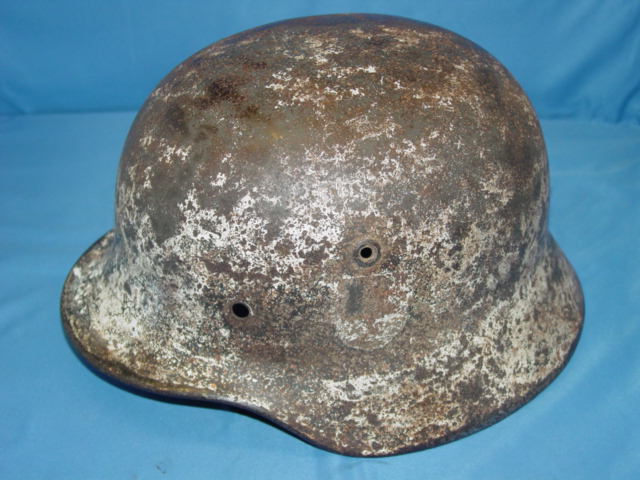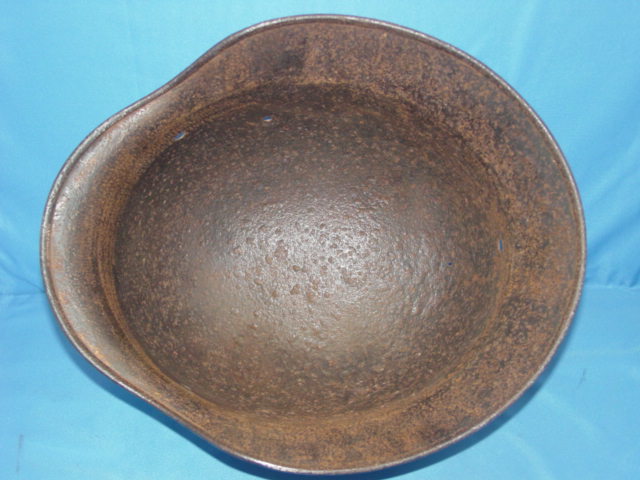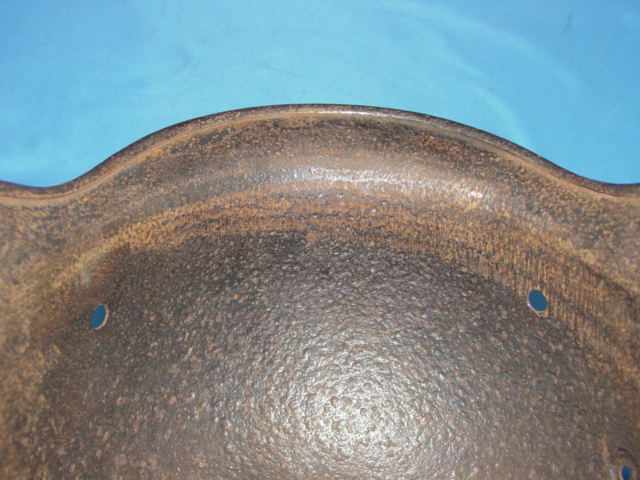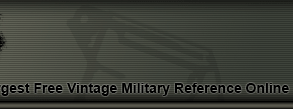|
WWII German Army Winter M35/40 Helmet -
Stahlhelm is German for "steel helmet". The Imperial German Army began to replace the traditional
boiled-leather Pickelhaube (spiked combat helmet) with the Stahlhelm during the First World War
in 1916. The term Stahlhelm refers both to a generic steel helmet, and more specifically to the
distinctive German design.
In 1934 tests began on an improved Stahlhelm, whose design was a development of the World War I
models. The Eisenhüttenwerke company of Thale carried out prototype design and testing, with Dr.
Friedrich Schwerd once again taking a hand.
The new helmet was pressed from sheets of molybdenum steel in several stages. The size of the
flared visor and skirt was reduced, and the large projecting lugs for the obsolete armour shield
were eliminated. The ventilator holes were retained, but were set in smaller hollow rivets mounted
to the helmet's shell. The edges of the shell were rolled over, creating a smooth edge along the
helmet. Finally, a completely new leather suspension, or liner, was incorporated that greatly
improved the helmet's safety, adjustability, and comfort for each wearer. These improvements made
the new M1935 helmet lighter, more compact, and more comfortable to wear than the previous
designs.
The item featured here is a German military M-35 helmet. As issued during World War Two.

The German troops saw a considerable amount of action in cold, snowy weather. Winter camouflage
was developed to better hide in these type of conditions. The helmet featured here is an
example of how a combination of white and dark paint was combined to create winter camo.
The example discussed here does not have a liner. The inside shows rusting, which indicates it was
probably used in the field. The rivets are missing. The ventilation hole is present.

|
The modern German helmet saw its birth during World War One. Its design was so advanced
for the time that the German government saw it fit for the same basic design to be re-employed
during World War Two.
The German helmet of World Wat Two has become one of the most recognizable silhouttes of war.
The helmetss of the Third Reich came in a variety of designs. There were approximatelly
9 different types developed. Even the non-military helmets often displayed the
swastika as a means to show support of the Nazi party. The helmet was constructed of a
combination of metal and leather.
|
|

Most of the helmets had markings stamped on them. These markings provided information such as
serial numbers, manufacturer code, size, etc. A
markings guide has been provided to help
the collector and enthusiast gain a better understanding of their meaning. It is important to
note that not all possibilities of markings are covered in that section.

|





